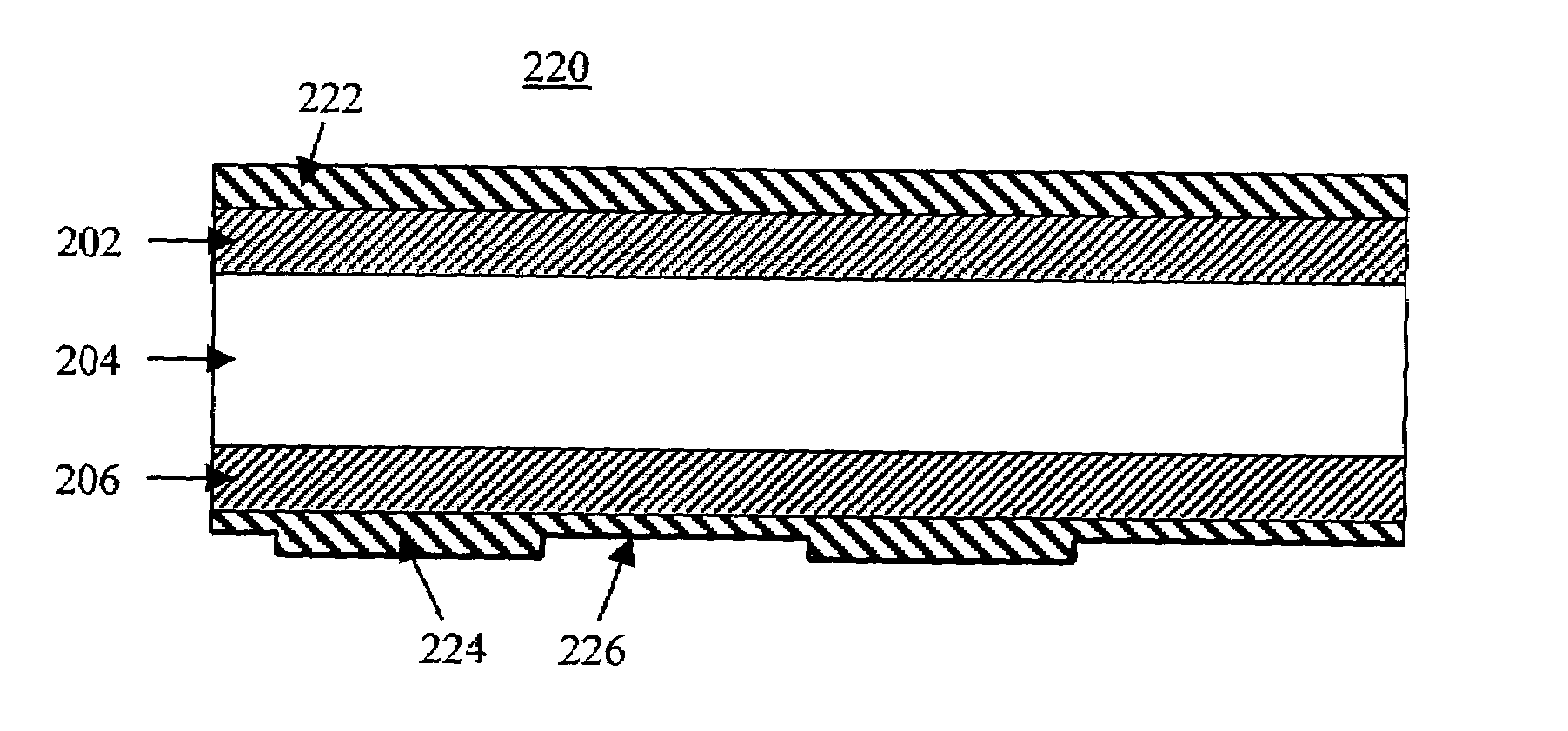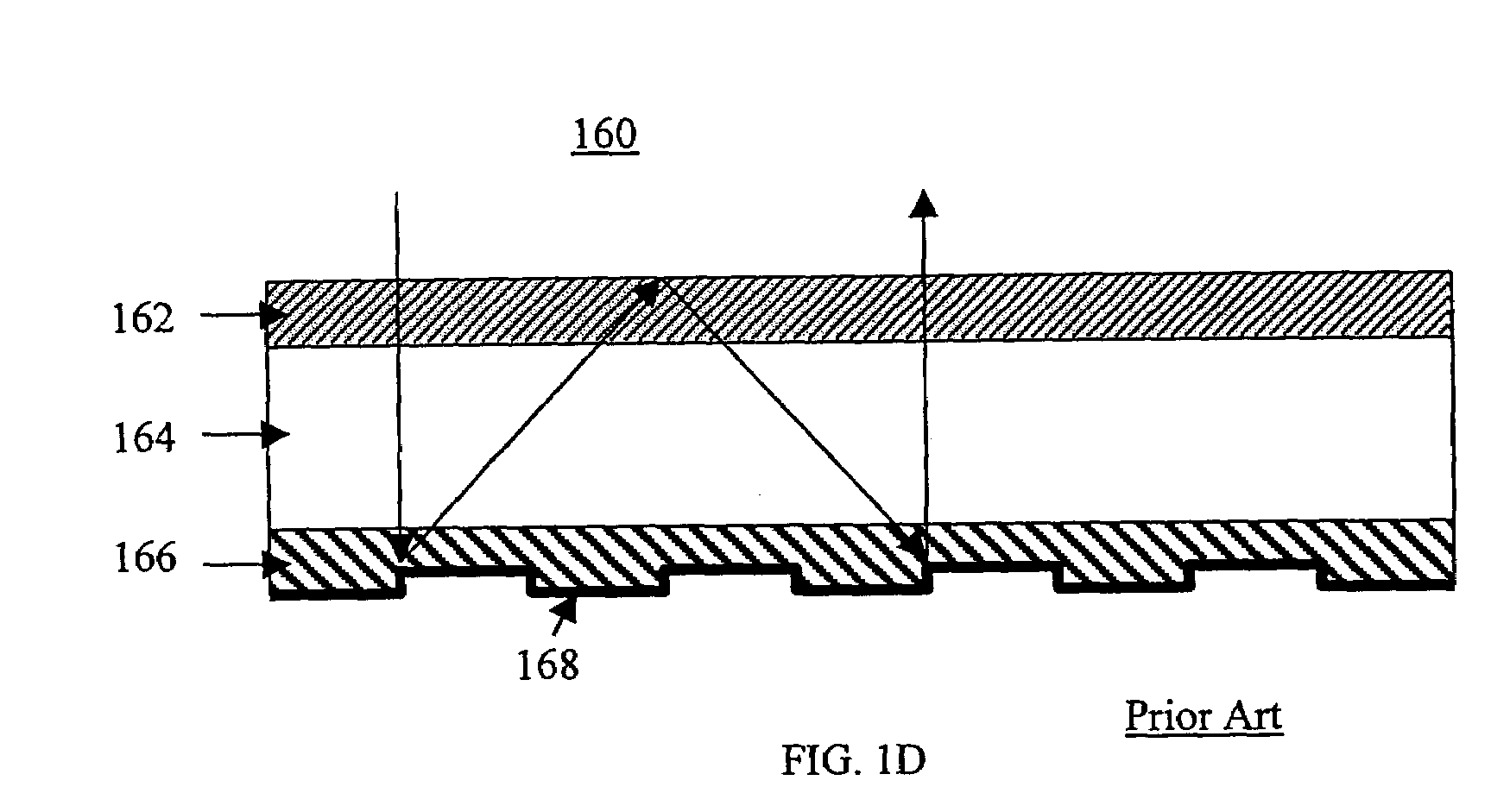Photodetector employing slab waveguide modes
a waveguide mode and waveguide technology, applied in the field of infrared radiation detection apparatus, can solve the problems of increasing the cost of hgcdte material, reducing the yield of hgcdte material, and relatively independent wavelength of iii–v mqw material, so as to achieve the effect of reducing cost, increasing yield and cos
- Summary
- Abstract
- Description
- Claims
- Application Information
AI Technical Summary
Benefits of technology
Problems solved by technology
Method used
Image
Examples
first embodiment
[0024]The present invention employs the TM modes described above to enhance the performance of IR photodetectors. The slab 200 for a slab waveguide photodetector according to the present invention is illustrated in FIG. 2A. The slab 200 includes an IR absorbing layer 204 and first and second contacts 202, 206 on either side of the IR absorbing layer 204. FIG. 2A includes a vector labeled EI that indicates the direction of the electric field of the incident IR radiation that is to be absorbed. A second vector, labeled EA, indicates the direction of the electric field required for strong absorption by the IR absorbing layer 204 if the IR absorbing layer 204 is formed of MQW material.
[0025]The IR absorbing layer 204 is preferably formed of any one of several MQW materials. Selection of the particular MQW material and design is determined by what wavelength of IR radiation is to be absorbed. A slab waveguide QWIP may operate in any of the three following wavelength ranges. The middle wa...
second embodiment
[0040]the present invention is based on the fact that the ideal dielectric slab waveguide structure 100 can support TM modes for radiation at different free space wavelengths. A multi-color slab waveguide QWIP 300 based upon different free space wavelengths is shown in FIG. 3A. The multi-color slab waveguide QWIP 300 includes first, second, and third contact layers 302, 304, 306 to allow detection of two different bands of IR radiation separately. A first band of IR radiation is absorbed in a first IR absorbing layer 308, while a second band of IR radiation is absorbed in a second IR absorbing layer 310. A preferred, though optional, antireflection coating 312 may be placed on the top surface of the multi-color slab waveguide QWIP 300. A cladding layer 314 is placed on the third contact 306. As with the slab waveguide QWIP 220, a reflective grating is formed on a surface of the cladding layer 314 to launch the IR radiation into the first and second IR absorbing layers 308, 310. The ...
third embodiment
[0050]A third embodiment, for multi-color sensitivity, employs a stack of independent slab waveguide QWIPs. A dual slab waveguide QWIP 600, illustrated in FIG. 6, includes a transmissive grating on a first cladding layer 602, a first contact 604, a first IR absorbing layer 606, a second contact 608, a mid-layer 610, a third contact 612, a second IR absorbing layer 614, a fourth contact 616, a second cladding layer 618 and a reflective layer 620. Each of these elements, except for the mid-layer 610, has generally been described above. For proper operation of the dual slab waveguide QWIP, the mid-layer 610 must have an index of refraction that is less than the indices of refraction of the first through fourth contacts 604, 608, 612, 616, and the first and second IR absorbing layers 606, 614. The result is that the first and second IR absorbing layers 606, 614 are located in independent slab waveguides as the two bands of IR radiation undergo TIR at the mid-layer 610.
[0051]In a preferr...
PUM
 Login to View More
Login to View More Abstract
Description
Claims
Application Information
 Login to View More
Login to View More - R&D
- Intellectual Property
- Life Sciences
- Materials
- Tech Scout
- Unparalleled Data Quality
- Higher Quality Content
- 60% Fewer Hallucinations
Browse by: Latest US Patents, China's latest patents, Technical Efficacy Thesaurus, Application Domain, Technology Topic, Popular Technical Reports.
© 2025 PatSnap. All rights reserved.Legal|Privacy policy|Modern Slavery Act Transparency Statement|Sitemap|About US| Contact US: help@patsnap.com



